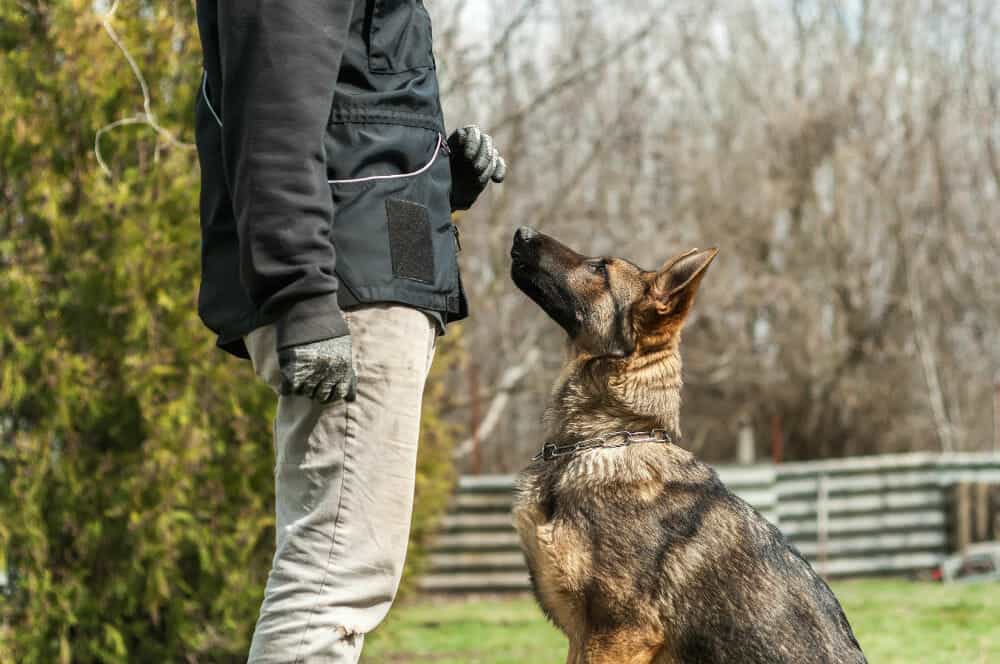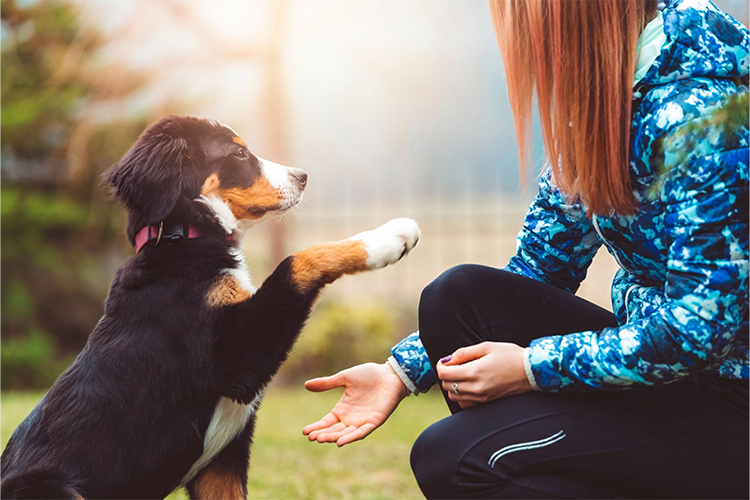Discover the Top Mistakes to Stay Clear Of in Dog Training
Discover the Top Mistakes to Stay Clear Of in Dog Training
Blog Article
Essential Tips for Successful Dog Training: An Overview for Pet Dog Owners
Effective dog training is a multifaceted process that calls for a critical method tailored to both the family pet's temperament and the owner's purposes. Recognizing just how to navigate these challenges can substantially enhance the training experience, ultimately transforming the relationship in between owner and dog.
Comprehending Canine Actions
Recognizing pet actions is vital for efficient training and cultivating an unified partnership between pooches and their owners. Canines communicate primarily through body movement, articulations, and activities, making it important for proprietors to translate these signals accurately. Acknowledging a pet's pose, tail placement, and ear orientation can supply understandings right into its mood. A wagging tail does not always indicate happiness; it can additionally signify enjoyment or anxiousness.

Socialization plays a substantial function in pet dog actions; direct exposure to various atmospheres, people, and various other pets can substantially impact a dog's character. Variables such as type attributes and individual character ought to lead training approaches, as some types might have particular behavioral qualities that require customized approaches. By comprehending these aspects, proprietors can create a helpful setting that motivates favorable actions, resulting in successful training outcomes and a much deeper bond with their pets.
Developing Regular Commands
Efficient interaction with your dog starts with establishing regular commands. This fundamental aspect of training is important for cultivating understanding between you and your pet. Consistency in the commands you use makes certain that your dog can reliably link specific words or expressions with the preferred behaviors.
When choosing commands, pick clear, unique words that are very easy to distinguish and state from each other. Avoid utilizing similar-sounding commands that might perplex your pet. Making use of "sit" and "remain" is suitable, however "rest" and "struck" could lead to misconceptions.
In addition, maintain the exact same tone and quantity for each and every command. Canines are delicate to singing cues, so differing your tone can create complication.
It is just as important to ensure that all family members get on the exact same page regarding the commands utilized. A united front in command use will certainly stop combined signals and strengthen the knowing process.
Positive Reinforcement Methods
The power of positive reinforcement in pet dog training lies in its ability to urge preferred habits through rewards and praise. This strategy is based in the concept that actions complied with by desirable results are more probable to be duplicated. By incorporating positive reinforcement right into your training regimen, you can successfully form your dog's behavior in a positive way.
To apply positive reinforcement, it's important to determine what motivates your pet, whether it be treats, toys, or verbal appreciation. When your pet dog does a desired activity, such as remaining on command, immediately award them with a treat or love. This association in between the command and the Full Report favorable result strengthens their understanding.
It's vital to timing the benefits correctly; supplying the reinforcement within seconds of the preferred actions helps your pet make the link (dog training). Furthermore, uniformity is vital-- ensure that all relative use the exact same commands and reward systems to stay clear of confusion

Slowly, you can lower the regularity of deals with as your pet finds out the actions, transitioning to praise or periodic benefits. This method not only promotes a solid bond in between you and your pet yet also promotes a positive knowing atmosphere, making educating an enjoyable experience for both.
Socialization and Communication
Continually revealing your dog my latest blog post to a variety of settings, individuals, and various other pets is crucial for their social development. Socializing should start early, preferably throughout the important home window of 3 to 14 weeks, when young puppies are most responsive to brand-new experiences. However, older canines can additionally benefit from ongoing socializing initiatives.
Present your canine to different settings, such as parks, pet-friendly stores, and metropolitan areas. This exposure aids them adjust to different stimuli, decreasing anxiousness and worry actions. Encourage positive communications with other pet dogs and people, guaranteeing that these encounters are risk-free and controlled to foster self-confidence.
Make use of structured playdates with well-mannered canines, as this can enhance your pet dog's social abilities and show them suitable actions. Obedience classes and training sessions likewise give exceptional opportunities for socializing, allowing your pet dog to interact with others in a supervised setting.
Monitor your canine's body language throughout interactions, as this will certainly assist you gauge their comfort level. Slowly increase exposure to more challenging circumstances while guaranteeing that each experience is positive. A well-socialized pet dog is most likely to display balanced habits, making them a pleasure to have in any setup.
Resolving Typical Training Obstacles
Every pet proprietor will certainly experience training challenges at some point, despite their pet's age or socializing level. Recognizing common issues such as stubbornness, diversions, and fearfulness can help in establishing effective approaches for renovation.

Gradually introduce distractions as the pet comes to be more efficient in commands. Short, regular training official source sessions are also efficient in keeping interest.
Terror can hinder a dog's knowing process. Gradual desensitization to the resource of fear, paired with positive reinforcement, can assist relieve anxiousness. Persistence is essential; never force a pet dog into a circumstance that triggers distress, as this may intensify the concern.
Ultimately, understanding and attending to these typical challenges with an organized approach will certainly promote a much more effective training experience, enhancing the bond in between dog and proprietor while advertising reliable knowing.
Verdict
In recap, successful pet training counts on a detailed understanding of canine habits, the establishment of constant commands, and the application of positive reinforcement methods. Socializing plays an important function in creating well-adjusted family pets, while attending to common training challenges calls for patience and flexibility. By implementing these vital methods, pet owners can promote a solid bond with their dogs and promote desirable behaviors, eventually resulting in a harmonious relationship between people and their canine buddies.
Understanding pet dog behavior is essential for effective training and fostering a harmonious connection between canines and their proprietors.Socialization plays a considerable duty in dog habits; direct exposure to numerous settings, individuals, and various other animals can significantly influence a pet's personality.The power of favorable reinforcement in pet training lies in its ability to urge wanted habits with rewards and appreciation. By integrating positive support into your training program, you can effectively shape your dog's behavior in a useful way.
In summary, successful dog training counts on a detailed understanding of canine behavior, the facility of regular commands, and the application of favorable reinforcement techniques.
Report this page